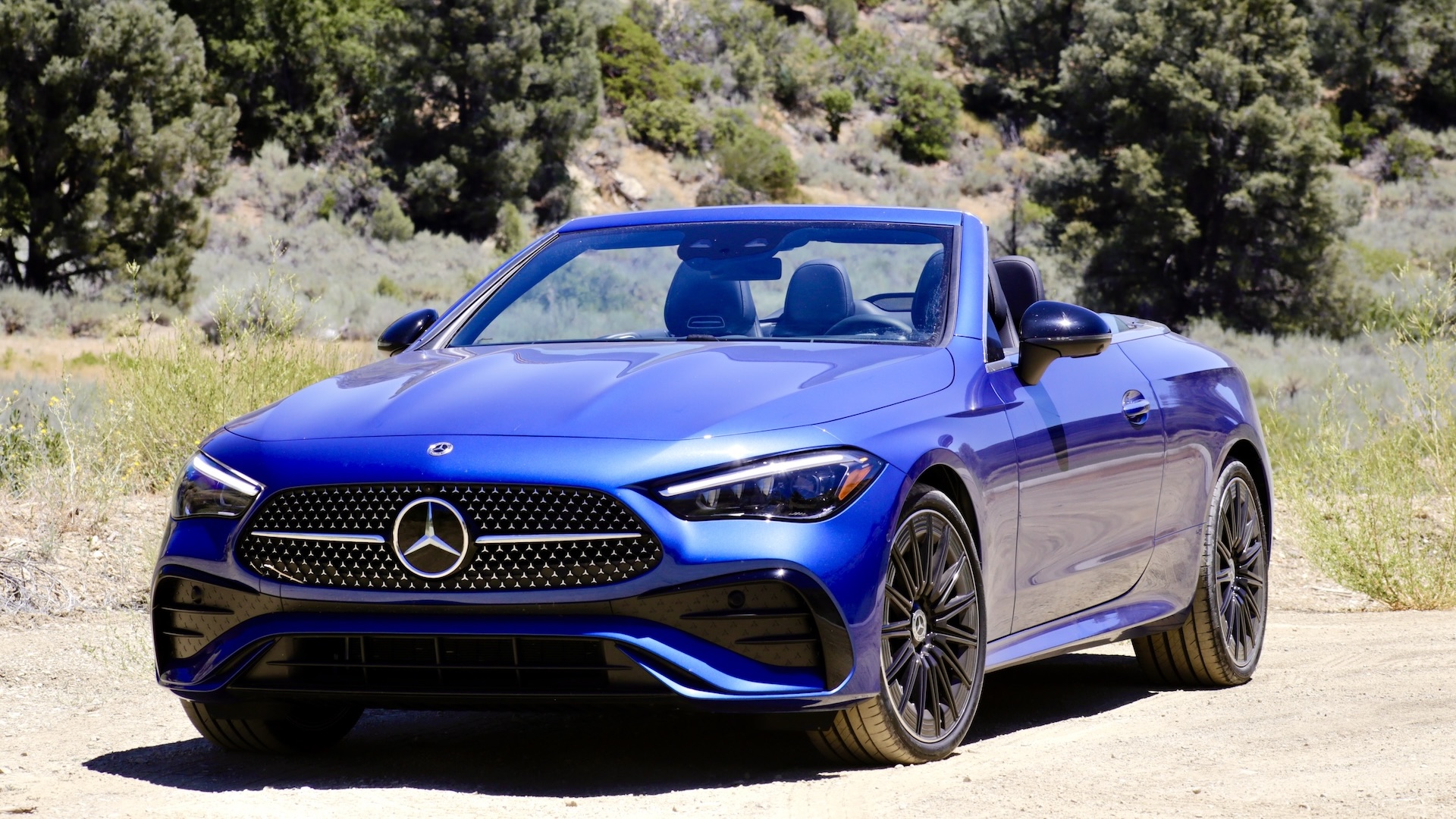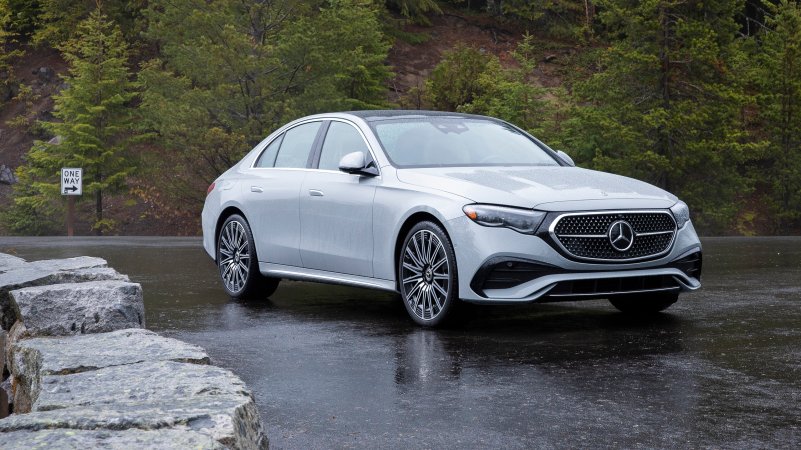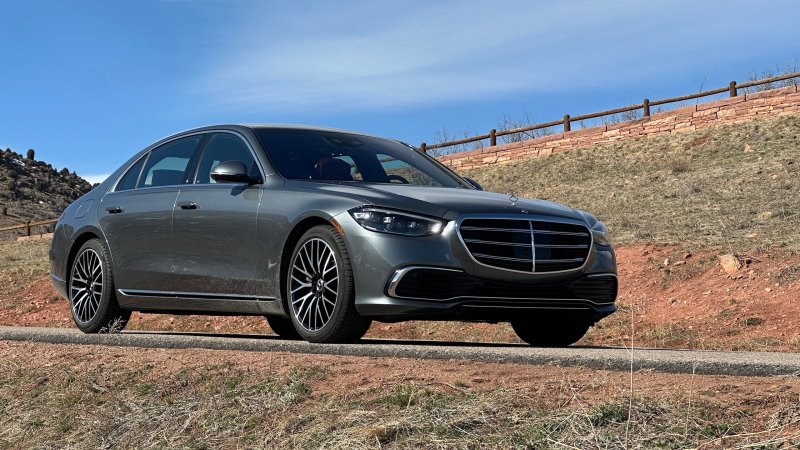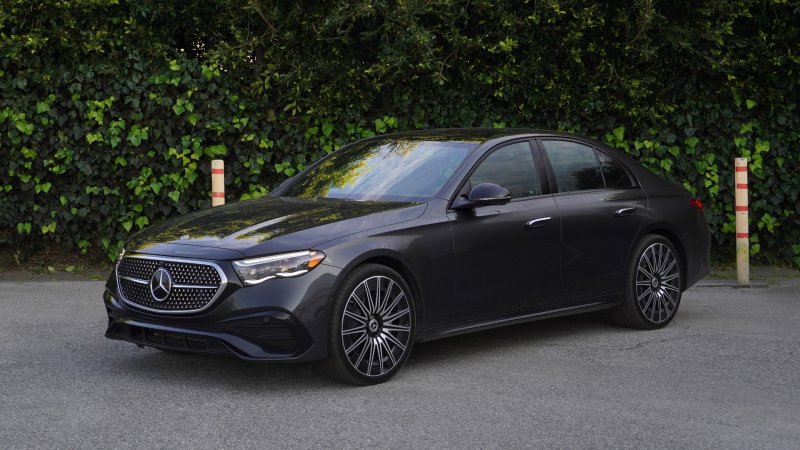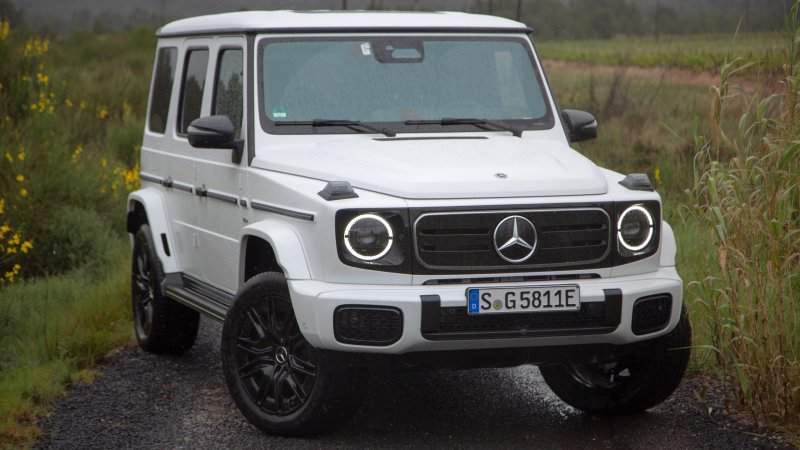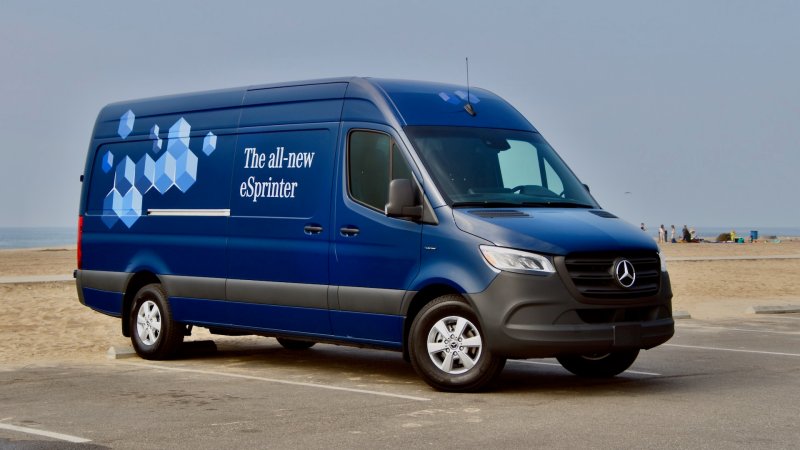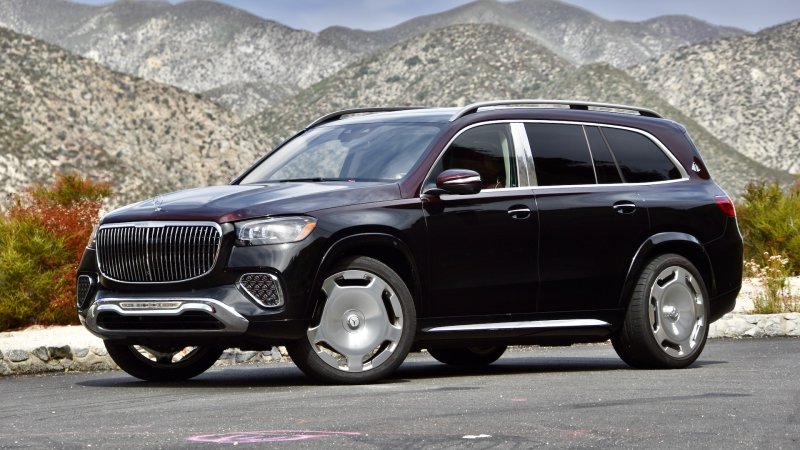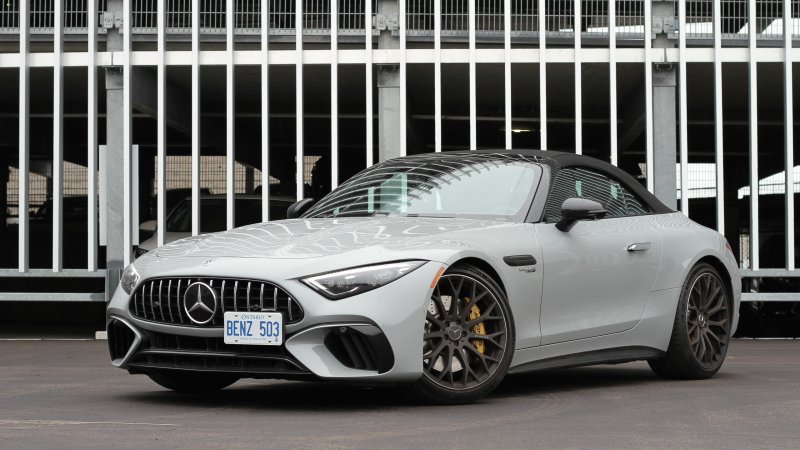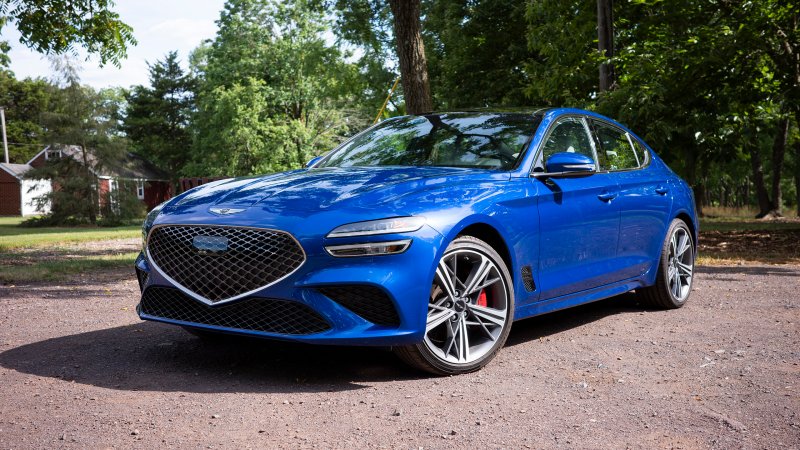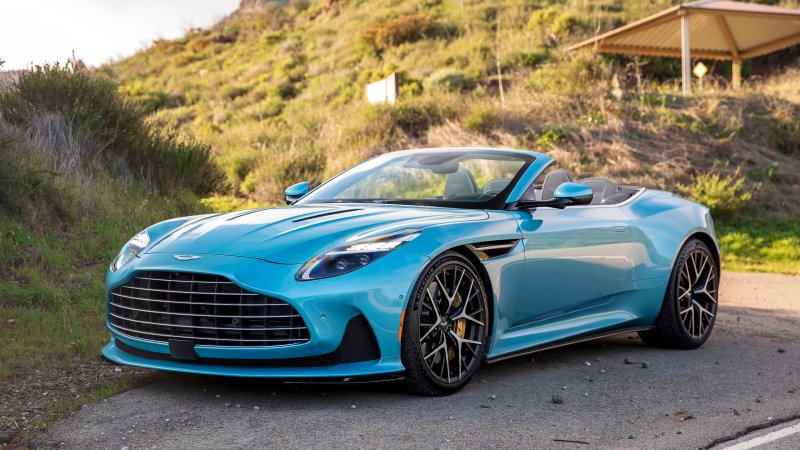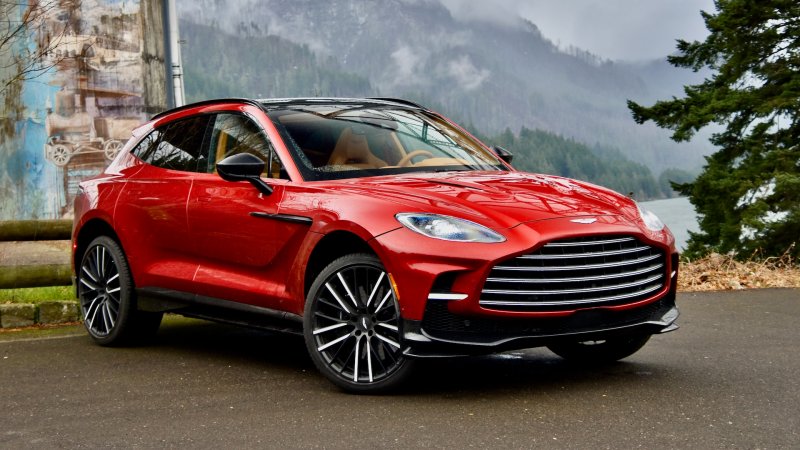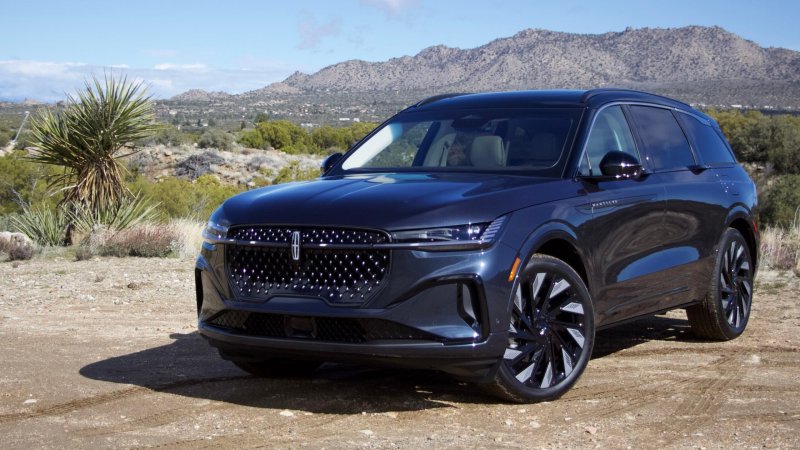We enthusiasts like to lament the slow death of the performance car but there’s one segment of new car that’s even less populous than that. At one point in automotive history, it seemed like there were numerous stylish options. Any guesses?
I’m talking about the wholesome two-door luxury convertible—but you already knew that when you clicked this link. Can’t pull a fast one on anyone these days. But it’s true: Right now, you only have a couple of options from Europe, with one being the brand-new 2024 Mercedes-Benz CLE Cabriolet.

This brand-new model essentially combines two former Benzes, the E-Class and C-Class convertibles, into one, sporting a longer wheelbase and overall larger stature than the previous two-door C-Class, but not as commodious as the E. Recently, I had the chance to spend several days with a base CLE300 model, tooling around sunny, heatwave-stricken Los Angeles. The entire time I couldn’t help but ponder: Why don’t more people buy this class of car?
The Basics
I’m generally of the opinion that cars designed as coupes first and convertibles second never look great as the latter. Take a look at the non-Targa Porsche 911 Cabriolet; wholly homely. The open-air FC-generation Mazda RX-7? Yuck. But the CLE works, aesthetically, top up or down. Particularly down. Its continuous lines and short rear overhang look great and definitely give it a refined, opulent look. Didn’t think I’d have to readjust a personal opinion to “cars designed as coupes first and convertibles second sometimes look great” after a couple of days with a base Mercedes Cabrio, but here we are.





But even if someone is more hardline about not turning cars into convertibles that didn’t start out as one, they probably won’t have many qualms once they sit inside the CLE. My tester’s interior was a very spacious and pleasant place to be, with 40.2 inches of headroom (top-up, naturally) and 55.7 inches of shoulder room up front, and 36 and 48.1 inches of head- and shoulder room, respectively, for two passengers in the rear. Cargo room comes in at a not-bad 9.6 cubic feet, and the rear seat is 60/40 split-folding for a little bit of expansion.
It felt nice to plop down into the CLE’s soft leather seating with heating and ventilation, and I was surrounded by substantial materials throughout. Mercedes also treats the Cabrio’s leather seats in a special coating that can apparently keep them up to 53 degrees cooler in direct sunlight. Having spent several sun-soaked SoCal afternoons with the top down, I didn’t really notice any substantially cooler-than-normal temperatures.



In keeping with the rest of Mercedes’ lineup, the CLE’s interior is almost entirely devoid of physical buttons and knobs and instead sports a portrait-ways 11.9-inch center screen and 12.3-inch digital instrument cluster, all running Mercedes’ third-gen MBUX software. On the plus side: wireless Apple CarPlay is easy to pair and fires up quickly, and there’s little lag while navigating through different settings and apps. Downsides include having to get used to very annoying haptic feedback steering wheel controls, the learning curve of knowing how to quickly navigate MBUX, and a screen that’s a haven for fingerprints and smudges. However, just like you get in the SL, the screen tilts with the press of a button to cut out glare, which helps combat bright rays coming in from any angle.
Driving the Mercedes-Benz CLE300
This being a convertible, there’s some added weight to factor in. Some strengthening was needed to avoid unwanted bending, and the system that retracts and deploys the soft top surely isn’t svelte. However, I was still a bit shocked when I saw the curb weight on this base, 2.0-liter four-cylinder turbo variant: 4,288 pounds. That’s heavier than the all-wheel-drive BMW M3, which is a dimensionally chunky and very stiff sedan.

Upon first glance, this four-banger’s specs don’t seem like they’d be able to push or pull the base CLE along with much gusto: 255 horsepower and 295 lb-ft of torque at 5,800 and 2,000 rpm, respectively. However, all CLEs come equipped with Mercedes’ 48-volt mild hybrid system, which chips in an extra 23 hp and 151 lb-ft of torque when it’s needed most and makes a noticeable difference. Sweeping past the 60 mph marker takes 6.2 seconds—not a hot rod but swift enough, especially for a car weighing over two tons—and it’ll continue on to braver highway speeds without much issue. The nine-speed automatic transmission is a little slow to react to dumping the throttle while passing, though it is geared quite well for overall economy—the engine purrs around 2,000 rpm at 80 mph.
The second exception to the rule of dealing with a lot of weight is the CLE300’s ride and handling, which are overall very good. It’s no full-on AMG product, but for an everyday cruiser, there’s not much to complain about.

It may not be an AMG outright but it is AMG-packaged: my tester was fitted with passively damped sport suspension bolted up to four-link front and five-arm multilink rear independent suspension. Body control was very good on winding mountain roads. In fact, I’d call it downright fun; compression and rebound were smooth and the chassis felt confident at reasonably spirited cornering speeds. Mid-corner jolts reminded me that there wasn’t a steel roof present—the unibody wiggled like a galloping river otter, but this was frankly more entertaining than disconcerting. Ride quality suffered over Los Angeles’ most offensive stretches of tarmac, but anything that isn’t equipped with air suspension and a shifted decimal point in its price would.
Cornering grip was respectable for non-performance summer tires, though not much of what the front tires were doing was relayed to the steering wheel. The steering action itself was overall quite light and only slightly increased in weight when turned 90-or-so degrees at speed. The brake pedal was right in the sweet spot between soft and firm, and braking performance was impressive thanks to my tester’s multi-piston sport brakes.

Finally, Mercedes’ latest suite of advanced driver assistance was generally easy to configure and worked with little issue. Setting radar cruise control (something MB funnily calls “Distronic”) was a snap and operated quite smoothly, and the Lane Change Assist worked quite well. It even canceled itself when it detected another motorist bogarting its intended spot from another lane. Active Steering Assist did reasonably well, though Southern California’s generally poor highway markings are typically a challenge for any automaker’s version of such technology.
The Highs and Lows
Overall, the CLE300 Cabriolet doesn’t have much issue meeting a wide assortment of tastes and needs. Its overall experience as a drop-top is quite good and motivated me to ride in the open air as much as possible over the 550 miles I spent at the helm. Wind noise is quite minimal with the windows up, even at highway speeds, and Mercedes’ integration of what it calls the Aircap—an added wind deflection system—made it even better. I wouldn’t call it elegant-looking when deployed, but its function is impressive.

Top up, you don’t lose much in terms of sound insulation over a conventional hardtop, either, and it still looks rather handsome. Additionally, Mercedes fits its Airscarf as standard—a seat vent that directs warm air around the neck area—but I never had a need for it during my sweltering summer week.
With its intention as an everyday convertible hard to pick apart, there were still some downsides elsewhere besides re-familiarizing myself with MBUX. The four-cylinder powertrain doesn’t have the best soundtrack, though it is cool hearing distinct spooling turbo sounds echoing off of nearby walls and parked cars.


Because it’s a roofless coupe, the doors are quite heavy and could be a bit unwieldy for smaller or elderly occupants. With the top up, visibility out the rear window is a little challenging, as is looking over one’s shoulder while changing lanes—modern driver assistance technology takes care of a lot of that, but I’m old school. Additionally, its various parking sensors were quite sensitive to the car’s surroundings. This isn’t new—I’ve driven other modern Benzes that get a bit over-reactive in this department—but it was still annoying.
Mercedes-Benz CLE300 Features, Options, and Competition
To swing open the CLE300 Cabrio’s heavy driver door, hop in, and drive it back to your humble abode, it’ll cost a minimum of $65,500. Here, you get such niceties as dual-zone climate control, voice controls, a brilliant Burmester 3D sound system, heated seats, three USB-C charging ports, power-folding mirrors, and a leather steering wheel. My tester then packs Mercedes’ Starling Blue metallic paint ($750), 20-inch AMG wheels ($1,150), the AMG Line package ($3,000), front seat ventilation ($450), multi-contour massaging seats ($950), and the Driver Assistance Package ($1,095), bringing the total to $73,750.



Mercedes considers the BMW 430i convertible to be its most direct rival, which starts at $59,695, possesses a turbo-four of equal potency (no, seriously), a negligibly quicker 0-60 time, mild hybrid assistance, rear-wheel drive, and a similar array of creature comforts and options. Then, we can’t forget the other major German luxury firm, Audi. The A5 Cabrio jumps off from $56,695, has a few more hp, a slightly quicker 0-60 time, and all-wheel drive, but no hybrid assistance.
However, the real race … unfolds … between each offering’s soft tops: The Mercedes takes 20 seconds to deploy or retract, BMW takes 18, and Audi takes just 15. Though, the Benz has the rest beat at being able to work at up to 37 mph, a wind-blown hair faster than the others.

Fuel Economy
Thanks to mild hybrid assistance and a gas-sipping 2.0-liter engine, the convertible CLE300 4Matic is rated at 23 mpg city, 32 highway, and 26 combined. I didn’t get a chance to drive the 3.0-liter turbocharged inline-six-equipped CLE450 and experience its punchier 375 hp and 369 lb-ft of torque, but it apparently returns the same economy numbers. Odd. Up against its direct counterparts from other brands, however, the CLE300 is marginally the thirstiest of the bunch—though still pretty darn thrifty, especially for a car that tips the scales at over 4,000 pounds.

Value and Verdict
The 2024 Mercedes-Benz CLE Cabriolet is a survivor. Besides its rivals from BMW and Audi, there really aren’t many options out there for compact (I know, that feels weird to read given the thing’s weight) premium convertibles that aren’t all-out sports cars or all-out luxury. Which is a shame.
Between its comfortable interior, solid overall handling and ride quality, good performance, thrifty fuel economy, and intuitive approach to being dailyable all year round, this Cabrio’s got a sense of occasion in spades that would improve anyone’s everyday driving experience. Anyone who’s in the market ought to not overlook it. In fact, even if you aren’t exactly in the market, perhaps that should be reconsidered, as two-door convertibles are a dying breed and definitely worth keeping around. Who knows, you might find yourself schlepping around with the top down as much as possible like I did.
| 2024 Mercedes-Benz CLE300 4Matic Cabriolet Specs | |
|---|---|
| Base Price (as tested) | $65,500 ($73,750) |
| Powertrain | 2.0-liter turbo-four with 48-volt mild hybrid | 9-speed automatic | all-wheel drive |
| Horsepower | 255 @ 5,800 rpm |
| Torque | 295 lb-ft @ 2,000-3,200 rpm |
| Seating Capacity | 4 |
| Cargo Volume | 9.6 cubic feet |
| Curb Weight | 4,288 pounds |
| 0-60 mph | 6.2 seconds |
| Top Speed | 130 mph |
| EPA Fuel Economy | 23 mpg city | 32 highway | 26 combined |
| Quick Take | Comfy, solid to drive, and adaptable, the convertible CLE makes a solid case for its species. |
| Score | 8/10 |







Got tips? Send ’em to tips@thedrive.com
